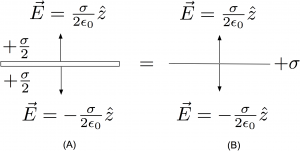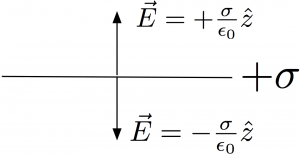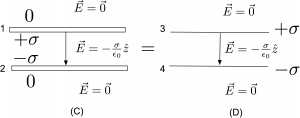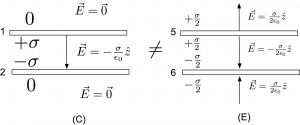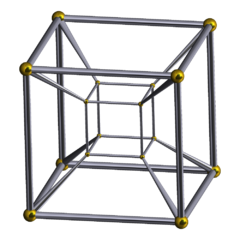The Veritas Forum ullresented a discussion entitled “Can Science Explain Everything” held at Cal Poly, San Luis Obispo (California) on January 27, 2016. Although it is an independent entity, is appears to be closely related to Cru Central Coast. Cru is a national Christian organization that typically operates in and around college campuses. It was formerly known as Campus Crusade for Christ. I’m not sure if there is a formal relationship between Cru and Veritas, but they appear closely connected in our area. Because the two seemed so entangled, I will probably not be consistent with my language in identifying the components of the event that are associated with each organization.
The following commentary is primarily about this specific event, with some references to recent ones at Cal Poly, and not The Veritas Forum nor Cru in general.
In case you don’t wan to read the whole TL;DR thing, my personal position on the event:
Summary: my observations of the event
The meeting was enjoyable, but bigger than I expected. Both sides were provocative, entertaining, and articulate. However, the question was loaded and had many unstated major premises. There was asymmetry between the profile of their speaker compared to ours. The speakers talked past each other because most terms being used were not well defined. The question itself should have been “Can Subjective Experiences be Described Objectively.” But this is an entirely different talk that could be completely secular in nature, diving deep into formal philosophy.
Summary: my answer to the question “Can Science Explain Everything?”
Science can, in principle, and provisionally explain things that can be explained. It cannot explain things that are not explainable. However, (at least) one twist: you don’t know in advance what can and can’t be explained, nor what fraction of explainable things are known. The best we can do is, as observations arise, assume something is explainable and move forward with tests and more observations. If something appears unexplainable then we should still try to figure it out, living with any mystery or uncertainty. Never declare anything unexplainable, this is a privileged assertion that is unavailable by definition. My advice? Avoid filling mysteries with oddly specific answers. Learn to live with mystery and assume everything can be figured out in principle. If you find an explanation, treat that as a provisional placeholder — one that can be ejected when better evidence and information come along.
Avoid filling mysteries with oddly specific answers. Learn to live with mystery and assume everything can be figured out in principle.
Full(er) report
The Veritas Forum is a yearly event on the Cal Poly campus that aims to faciliate dialog between the Christian worldview and other views, typically those traditionally in tension with Christianity like atheism or secularism. The Veritas Form is a regular event across Cru-active campuses around the United States, Canada, and some European countries.
The speaker for Cru was Ian Hutchinson, an engineering professor at MIT who specializes in plasma physics. He is an outspoken advocate of the Christian religion and is keenly interested in the interplay between religion and science. He focuses primarily on deflating scientism.
Representing the atheist view was Paul Rinzler, a Cal Poly professor in the music department. He is on the board of directors of Atheists United San Luis Obispo and is also the co-avisor of the Cal Poly student club AHA (Alliance for Happy Atheists). I am the primary faculty advisor for AHA and have been for about five years. I have been contacted in the past about being the atheist representative for Veritas. I have politely declined. However, in the past I have recommended Pete Schwartz from the Cal Poly physics department as well as Ken Brown from Cal Poly’s philosophy department. Both Pete and Ken participated in 2014 and 2015 respectively. This year, I was invited to participate in a faculty Q&A held on the Thursday afterward (I was not able to attend because of other time commitments). I should note that AHA is a very small student club with perhaps 15-20 members.
Science can provisionally explain things that can be explained. It cannot explain things that are not explainable. However, you don’t know in advance what can and can’t be explained, nor what fraction of explainable things are known.
I had the pleasure of having dinner the evening of the event with Paul and Ian, along with student representatives from AHA, Veritas, and Cru (both the local reps and some regional reps) . Even one of my colleagues from the physics department, who is involved in Veritas (and/or Cru?), was also at dinner. I didn’t expect to see her, but it was fun.
First, before getting into my concerns and observations about the event, I would like to make it clear that I found found the individuals in Cru (and/or Veritas?) as well as Ian, to be very pleasant and friendly. We had much in common and had some very nice discussions about side topics peripheral to the main religious theme of the Forum: music, physics, culture, work, “small world” social connections, and so on. My critique and observations are not judgements of the individuals. They are a passionate, hardworking group that profoundly believe in what they are doing. When I was an undergraduate, I regularly participated (as an atheist!) in a Christian Youth Group circa 1989. I made some great friends who I keep in touch with to this day. There was real camaraderie, honest discussion, and genuine respect amongst us all. It was primarily a social group. The emphasis was on love in the form of philia, brotherly love. They were very accepting and I really have fond memories of that period of my life. However, there was a part of the group’s activities that focused on what is referred to as agape. This is a kind of spiritual love between an individual and god (in this case the Christian god). I couldn’t easily relate to this. Naturally, for a bunch of high school and undergraduates, there was plenty of eros to go around as well.
Anyway, Cru and the associated student participants and attendees (going beyond the Cru leadership) reminded me very much of this experience I had in Youth Group. In fact, their attitudes and personalities felt very natural and comfortable to me for this very reason. I found their friendliness continuous and I actually wanted to spend time with them as individuals. Again, this is largely due to my very positive experiences in the Youth Group where I never felt judged as an atheist, but rather accepted as a person.
That said, I have concerns about the event and its content I feel compelled to discuss here.
Despite appearing very open and named Veritas (“truth”), there is a fundamental dishonesty to the entire event. This dishonestly is not necessarily a conscious one on the part of the organizers, although there is certainly a marketing angle that certainly must drive this at higher corporate levels. The Veritas Forum aims to host an honest intellectual discussion between opposing views. They seem to genuinely want to have a serious conversation about the topics they propose.
Why do I think it may be dishonest?
Scale
First, some context. Cru is not a small organization. Cru and The Veritas Forum bring considerable resources to the event. They are very professional and it is a well-oiled machine. This is no smalltime operation. They aim to present themselves as a TED-style or Intelligence^2 experience. They effortlessly filled the 1200-set Performing Arts Center at Cal Poly (PAC), offering free attendance. They had a full compliment of ushers provided by Cal Poly and had access to all the resources available to the venue. This use of the PAC is very, very expensive. And, this was not the first show on the speaker’s agenda. He had just come from two other Veritas events in the past two days in other states. Frankly, I had no idea what I was getting into.
Now, this would not be a bad thing by itself. In fact, it could easily be viewed as a good thing. They bring fairly high profile speakers from their camp. They are the Lawrence Krausses, the Sam Harrises, and the Michael Shermers of their world: medium level celebrities who have books published and who do many, many speaking engagements on the topics being discussed. In other words, they are refined professionals with considerable experience in public discussions on the topics of interest. They have their talking points and messages keenly refined. Moreover, they have “heard it all.” They are performers who know how to work their audience. They know exactly what to expect.
Again, why is this bad?
However, at least for our events, they do not have high profile atheist speakers. They select, in coordination with AHA, someone locally or on campus to speak for the atheists, usually seeking a local scientist. This might seem very fair, even generous. In fact, a certain part of me does think it is cool. Perhaps it is. It gives local personalities, largely unknown, a chance to shine a bit and give some public exposure to AHA. But, as I mentioned above, AHA is a ragtag student club on campus with perhaps 10-20 undergraduate members. That said, we were billed as number two amongst the event’s sponsors, after Veritas itself but before ASI (Associated Students Incorporated — the main corporate representation of students on campus independent of, but strongly tied to, the university). ASI is basically in charge of managing the event via the student clubs and facilities. They are the formal interface between external entertaiment and the university, which generally disassociates itself from specific events.
But, upon reflection, there is something very odd about these practices. The local intellectuals are not usually plugged into the main issues being discussed and are not accustomed to speaking about these issues in a public way. Unless trained in the style of the arguments that are made, it doesn’t help if you are a scientist or not, even for scientific topics. Basically, the whole affair is, intentionally or not, biased strongly toward Veritas while, superficially, seeming fair. Also, while it may seem generous to put AHA on the same footing as ASI and Veritas, we essentially did nothing. We were made to feel welcome, allowed to set up a booth, wined and dined, allowed to select a representative, but never had any input into the logistics of the event or how it would be run. In short, we were way out of our league. One is left with the vague sense that the purpose of AHA is really to lend credibility to the event. By placing an atheist club on campus on the same footing as Veritas itself, it gives the perception that the discussion is totally symmetric. Unless you are familiar with both Veritas and AHA, the asymmetry would not be apparent at all. Little would you know that AHA, with an operating budget of about $300, has a hard time filling a small classroom once a quarter for a group meeting. Depending on the club leadership year-to-year, we may not be organized enough to make T-shirts, never mind organize any events with international forum sponsors.
I vacillate between my thoughts on this. On one hand it seems very warm, open, and generous to allow the local “opposition,” no matter how modest, to participate and be billed as equals. But another part of me feels uncomfortable with the idea. However, if I’m honest, I’d be upset if they didn’t coordinate with us, given the topics being discussed. I guess I can’t really have it both ways, which is why I’m admitting that I’m not entirely sure how I feel about it.
It is this discomfort that has demotivated me from participating in the past. The irony is that historically I have been viewing these events in a backwards way. I was seeing Veritas as a fringe group whose views I didn’t want to dignify. They were on footing with the rare-earther, the flat-earthers, or other minority extremists. I imagined that Veritas was a local operation, a student club. I didn’t want to lend my “gravitas” as a physics professor to such an event and lend credibility to their arguments. However, this is, in some sense, backwards. Their view is the status quo. They are huge. It is them lending gravitas to us. WE are the small players here. If anything, we are the ones who should be advertising our association with THEM. But, in their world, our names to lend some marketing credibility. They can say “atheist organization AHA was involved” or “we had distinguished Dr. YYZ, professor of science XYZ discuss ABC with our Dr. ZZY.”
Event Title
The title of this forum was quite curious. “Can Science Explain Everything?” seems an interesting and promising line of discussion. It certainly got my attention, getting me thinking about it right away, which seems like a good thing, right? But it is like a leading poll question that hasn’t been vetted properly. It (unconsciously) primes an answer.
“Is There A Blue Gnome Eating a Yeti in Oregon?” Such a question implies the existence of blue gnomes, the existence of yetis, that said gnomes have the possibility of eating said yetis, and that they both have a chance of being in Oregon. Not one of those major premises has been established, but the question itself implies that they have been.
Or implies that it is even a good question to ask. It isn’t a neutral title and places science in a defensive position. The title has more than a few major unstated premises. For example, has science actually ever claimed to be able to explain everything? Indeed, can you really refer to science as an entity? Science. It isn’t itself a worldview rather a procedure (however, see my equivocation discussion below). Why not frame it as “Can Religion Explain Everything?” or “Can Christianity Explain Everything?” The very asking of a question in this context implies it is a good question to ask: “How Many Radians Can Actually Dance on the Head of a Pin?”, “Is There A Blue Gnome Eating a Yeti in Oregon?” Such a question implies the existence of blue gnomes, the existence of yetis, that said gnomes have the possibility of eating said yetis, and that they both have a chance of being in Oregon. Not one of those major premises has been established, but the question itself implies that they have been.
Equivocation of Vocabulary
I think equivocation was a big problem at this event (and this isn’t by any means unique to Veritas but is common practice in all events of this forum-y kind). Terms were used inconsistently during the discussion, sometimes sentence-by-sentence by a single speaker: “science,” “explain,” “everything,” “god,” “religion,” “faith,” “Christianity,” “belief,” “know” (e.g. epistemology), “morality,” “meaning,” “love,” “genius,” and so on. This made things very, very confusing. I had to constantly fill in my own definition of what those terms meant, as did every other listener. Yes, I understand you can’t define every word every time you use it; that clearly would not work. But it seems like you should define some core ones central to the discussion. By allowing everyone to fill in the blank, one couldn’t help but be biased and hear what you wanted to hear. Paul at least attempted to make this point: we need to define terms so we know what we are both talking about. His point was that, if you are just having a subjective experience in your head and sharing it as such, it was fine to leave it fuzzy. But if two people are having an objective discussion, How can this happen if we aren’t using terms the same way? It is the old chess vs. checkers problem: you are about to place your opponent in a knight fork when suddenly they start jumping your pieces and say “king me.” If you aren’t playing the same game, how can you possibly begin? This line of critique was often dismissed, usually respectfully, as attempting to quantify the unquantifiable or to deconstruct the undeconstructable. But most of these terms were not used in an arbitrary way, but rather in a very specific way that alluded to a specific definition. I think one of the most important problems was a tendency to conflate “science” with “scientism,” as if they were the same thing. Most scientists don’t equate scientism with science. Most don’t know what scientism is, but I’m guessing many scientists would lean in the direction of scientism. Scientism is basically the tendency to put “faith in science,” and that it can, in essence, explain everything. It is science transformed into a blind belief system. You see some of this creeping into popular culture. The meme-machine I Fucking Love Science (IFLS) is basically in this category. Yes, many of the things IFLS promotes are very neat, inspiring, and, sometimes, mind blowing. But it is a scientism honeypot. True Believers flock to it en mass. It goes beyond just popularizing science, which is basically a good think (e.g. Carl Sagan or Neil deGrasse Tyson). IFLS takes an attitude that is just a little immature while being unapologetically zealous. Nevertheless, scientism is an cultural entity — an opinion — while science itself is a process or method. If you know the difference, it is very confusing when the terms are used interchangeably. If you don’t know the difference, it can really distort the discussion.
What it was really about
Let me conclude with an opinion about the content of the discussion. The most frustrating part of the event, which I can’t really blame Veritas for, is that the discussion danced around its core question. Although they framed the question in a provocative way, the discussion really had nothing to do with religion nor science. The real question was: “can you objectively describe a subjective experience.” Although I’m no expert, this is a well known problem that comes up when discussing the philosophical nature of consciousness (and artificial intelligence), even in a purely secular context.
For example, the term “qualia” is used to describe the internal subjective sensation of being self-aware. Through the integrated experience of your brain, your senses, and other internal mental process, you feel a “real me,” independent of the body, actively engaged in the world. It is the Cartesian theater and homunculus: a typical modern person might describe being self aware as a vague sensation of a “little me” watching your experience on a big movie screen in you head directly behind your eyes. Of course, this isn’t really the way it works.
When you subscribe to the secular worldview (which I do) there is the trope: “the mind is what the brain does.” You will usually concede that it is not clear how to objectively describe qualia — an apparently pure subjective experience. You can measure brain function, make neural maps, measure neurotransmitter levels, and so on — make all the objective measurements you want — but the subjective experience of being aware seems to be always behind a veil. If you were to make a machine that had all of the objective elements of what a conscious being had, you would still not be able to establish it had qualia, even if it were to describe the sensation directly to you. Indeed, this happens every day: you also assume other people have qualia. People certainly act like they have a similar qualia as you do — and there is perhaps good, intuitive reasons to believe it — but it isn’t something that seems to be able to be quantified based on our current abilities and imaginations.
So, the question remains: can we know something exists even if it can be described objectively? Ian’s answer is “yes” and it applies to, amongst many things, “love” and “faith in the existence of god.” He would call this “a different kind of knowledge.” For a secular person, the equivalent would be that we “know” from personal experience that qualia exists (“I think therefore I am” sorts of lines). Nevertheless, such a subjective experience seems to elude objective description. So, in some sense, topics like this drive home the point that we secular atheists have to be careful. We can’t, on one hand, say that qualia is a subjective experience that we know exists (i.e. is a form of knowledge) while dismissing other subjective experiences as mere products of the brain. Perhaps there is a “different kind of knowledge” beyond objective knowledge.
Well, not so fast.
Can science explain everything? We need to define some terms.
Science: its a tool that can map out the consistent structure and patterns of our reality through systematic hypothesis testing and strict evidence-based refinement of these hypotheses. Remove the culture and opinion-driven scientism from the argument. In science as I have defined it, knowledge is always provisional. It is subject to change if new tests or new evidence develops for new ideas. Scientific knowledge can change based on evidence and systematic testing. This is in contrast to faith-based knowledge, which is the acceptance of an idea without systematically testable evidence. It is a Belief.
Explainable: this is when a claim is systematically testable enough that a consistent model can be developed through one or more lines of evidence. This model should be able predict new testable things and fit well into established knowledge of formerly explainable things. Under these conditions, the claim can be provisionally “explained” subject to ongoing testing and evidence. When multiple lines of evidence support a claim under some well defined set of physical conditions, we might call this a Law or a Theory.
Everything: Well, its everything. Vast swaths of everything include many strange things beyond our ability to process. In our context “everything” can be bundled into “explained,” “unexplained,” “unexplainable,” and a host of categories we don’t even know exist. In each of the cases, we can break explainability into “known” and “unknown.” This is going to get very Rumsfeld-ian, so forgive me. Basically, there are
- explainable things we are working on, but don’t know if they are explainable
- explainable things we are working, but suspect are explainable
- various categories of explainable things we aren’t working on
- unexplainable things we are working on, but don’t know they are unexplainable
- explainable things we don’t know exist
- unexplainable things we don’t know exist
In addition, we can’t know a priori if something is explainable or not. To twist the dagger even further, we never know if something is unexplainable. Basically, we observe things, try to test them with science and build lines of evidence and models of consistency. If this observation turns out to be in the unexplainable category, we will never know it. We can give up trying to explain it (but that might mean it is explainable but we gave up too early). Or it can mean that it is genuinely unexplainable. Both results look the same. If it can be explained, it will be with science (albeit with provisional knowledge at each phase).
Summary: my observations of the event
The meeting was enjoyable, but bigger than I expected. Both sides were provocative, entertaining, and articulate. However, the question was loaded and had many unstated major premises. There was asymmetry between the profile of their speaker compared to ours. The speakers talked past each other because most terms being used were not well defined.
Summary: my answer to the question “Can Science Explain Everything?”
Science can, in principle, and provisionally explain things that can be explained. It cannot explain things that are not explainable. However, (at least) one twist: you don’t know in advance what can and can’t be explained, nor what fraction of explainable things are known. The best we can do is, as observations arise, assume something is explainable and move forward with tests and more observations. If something appears unexplainable then we should still try to figure it out, living with any mystery or uncertainty. Never declare anything unexplainable, this is a privileged assertion that is unavailable by definition. My advice? Avoid filling mysteries with oddly specific answers. Learn to live with mystery and assume everything can be figured out in principle. If you find an explanation, treat that as a provisional placeholder — one that can be ejected when better evidence and information come along.









